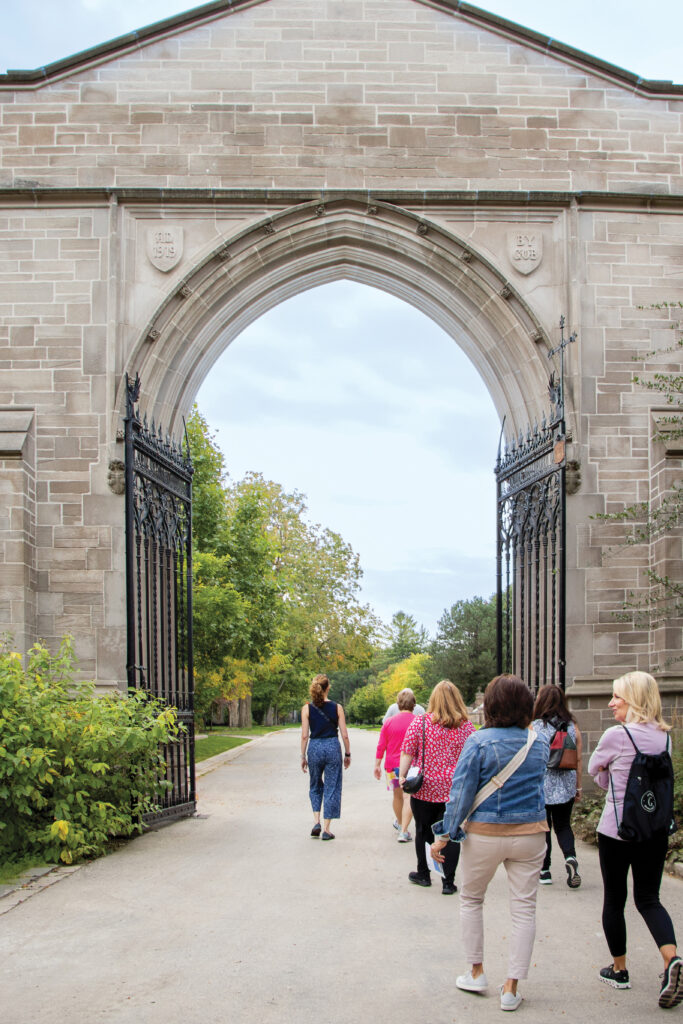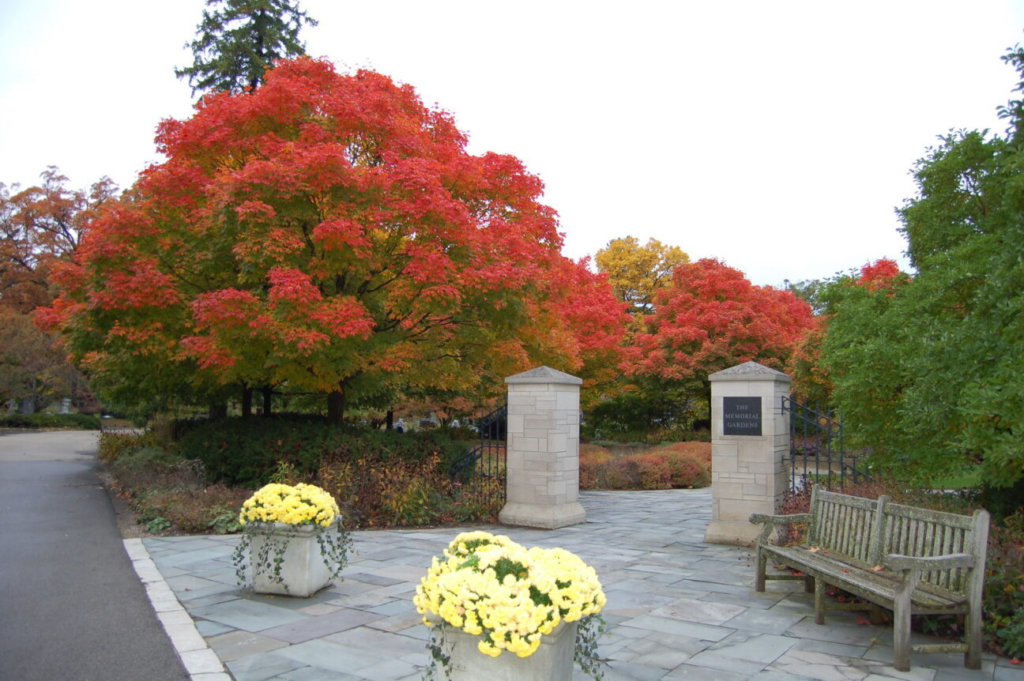
By David A. F. Sweet
Set atop a bluff and bordered by ravines, it’s hard to imagine a more peaceful final resting place than the Lake Forest Cemetery. Its 23 acres featuring large oak trees and private mausoleums on the edge of Lake Michigan, the cemetery is on the National Register of Historic Places.
Yet, though it may seem strange or even oxymoronic, the cemetery is a living entity – a spot that evolves rather than simply sits still. Burial customs change, along with space considerations. The wishes of residents can switch from one generation to the next.

The stately stone arch and gothic-style gates at the cemetery’s entrance were donated in 1919 by a couple who had lost their son.
“In order to grow, to continue to serve, things at the cemetery often change to meet the needs of the community,” said Sexton Phil Alderks, who has served in that role for more than 20 years.
The latest development involved the final phase of a two-phase project involving the Memorial Gardens, which rest to the east soon after one passes through the cemetery monumental gate. Approximately 400 new niches were installed in the Fountain and Spire Gardens, and the bluestone walkways were replaced.
The Memorial Gardens Project was launched in the early 1990s as the Cemetery Commission was challenged by the mayor at the time to explain how it was going to support itself long term, according to Alderks.
“Because Lake Forest has a relatively high rate of cremation as compared to full burials, the Commission came up with the idea of the columbarium,” said Alderks, referring to the structure that holds the cremated remains of the dead.
Initial construction started in the late 1990s, and the Memorial Gardens were dedicated in June 2000. Due to budget considerations by the city, which owns the cemetery, the niches on three curved walls were not included at the time, but the foundation work was completed for future space for those who were cremated.

The entrance to the Memorial Gardens, which were dedicated in 2000.
The niches were highly successful, as the Cemetery Commission met its sale goal year after year. The bonds issued during the construction were paid off. Since the Low Curved Wall in the Lake Garden area was almost sold out by 2017, discussion began about a second phase to add curved walls with niches featuring a similar look to the Lake Garden area. The project broke ground in April 2023 and is slated to be finished in the spring of 2024.
It represents one of many additions since the Lake Forest Cemetery location was chosen in 1857 by Almerin Hotchkiss – in fact, picking a site suitable for the cemetery was the first public work authorized and occurred before Lake Forest had even been incorporated. In 1882, William LeBaron Jenney — considered the father of Chicago’s early skyscrapers — moved the entrance to the current Lake Road spot and created an open, treeless field with paths for strolling. In 1901, Ossian Cole (O.C.) Simonds, known for his landscape work at Graceland Cemetery in Chicago, modified the cemetery design, incorporating native plant material and creating vistas within a pastoral landscape.
Residents have contributed to the beauty of Lake Forest Cemetery for years. The stately stone arch and gothic-style gates at the entrance to the cemetery were donated in 1919 by Grace and Finley Barrell in memory of their only son, Jack Barrell, who drowned in the Chicago River at age 23. Sculptures of animals, such as foxes and deer, have been created by local artists and added to their family’s headstones. The cemetery is the resting site of many well-known captains of industry in Chicago – long-time Lake Forest names such as Dick and Swift dot the lot – along with headstones of movie director John Hughes and others.
For a Memorial Gardens niche, prices range from $5,350 to $6,150. The cost for a full grave, depending upon where it is located and how large it is, runs from $7,500-$15,250.
Any Lake Forest resident can be laid to rest in the cemetery, regardless of whether they live in town now, but former residents are charged more than current residents. More than 6,000 Lake Foresters occupy the space.

“This place is filled with meaningful lives,” said Sexton Phil Alderks.
“I’ve known many people who are laid to rest here; this place is filled with meaningful lives,” Alderks said. “I’ve developed relationships with the 5th and 6th generations of Lake Forest families.”
Kim Piekos contributed to this article, which was first run in Lake Forest Love.
Unsung Gems Columnist David A. F. Sweet can be reached at dafsweet@aol.com.







